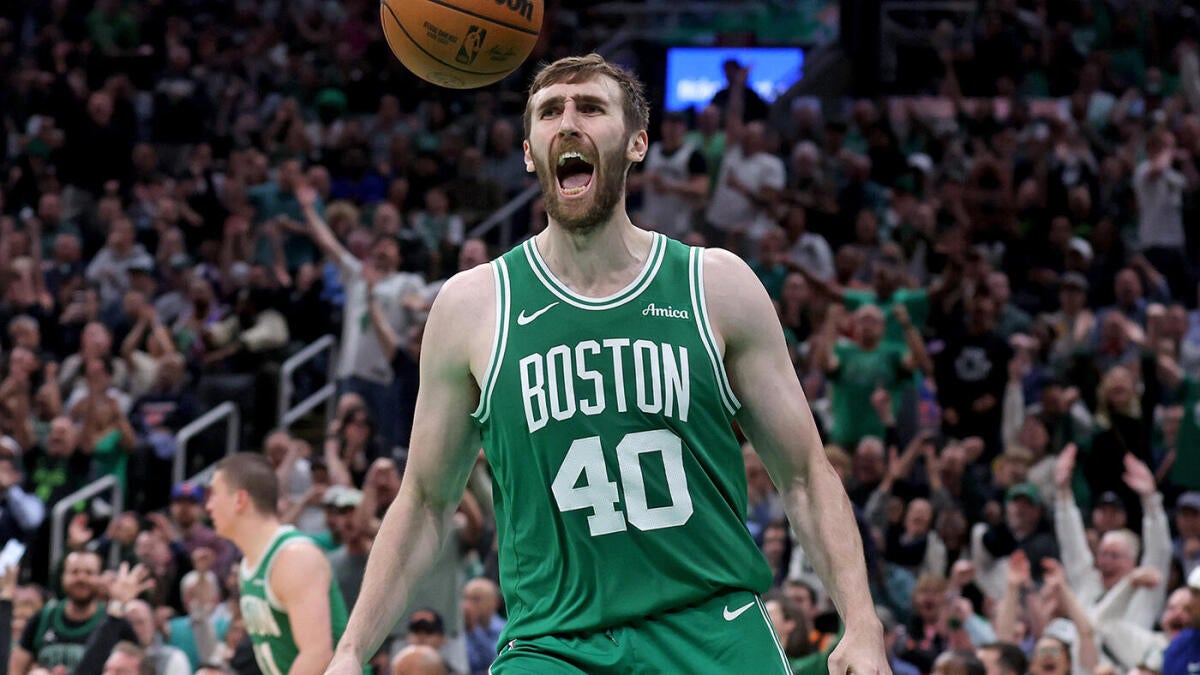The Boston Celtics’ offseason has been marked by significant roster changes, with the departure of Luke Kornet to the San Antonio Spurs standing out as a pivotal move. Kornet, a reliable backup center, played a crucial role in the Celtics’ success over the past two seasons, contributing solid averages of six points and five rebounds per game while shooting an impressive 67% from the field. His departure not only leaves a statistical gap but also raises questions about the Celtics’ frontcourt depth and financial flexibility.
Kornet’s new four-year, $41 million contract with the Spurs reflects the growing value of versatile big men in the modern NBA. His ability to stretch the floor, defend the rim, and provide efficient scoring makes him a valuable asset for any team. For the Spurs, this signing represents a significant investment in their rebuilding efforts, as they aim to compete in the highly competitive Western Conference. Kornet’s experience and skill set will be instrumental in helping the Spurs develop their young core and establish a strong defensive identity.
The Celtics’ inability to retain Kornet highlights the challenges teams face in managing their salary cap and luxury tax thresholds. With key players like Al Horford and Derrick White already on the roster, the Celtics had limited financial flexibility to re-sign Kornet. To mitigate his loss, the team quickly signed Luka Garza, a promising young center with a two-year deal. Garza’s high-scoring potential and post-playing ability make him an intriguing addition, but he will need time to adjust to the NBA game and prove himself as a reliable option in the frontcourt.
The Celtics’ offseason strategy reflects a broader trend in the NBA, where teams are increasingly prioritizing youth and potential over established veterans. This approach allows teams to maintain financial flexibility while developing young talent that can contribute in the long term. However, it also comes with risks, as young players may not be ready to step into significant roles immediately. The Celtics will need to carefully manage their roster construction to ensure they have the right mix of experience and youth to compete at a high level.
The Spurs’ aggressive pursuit of Kornet also underscores the growing importance of versatile big men in the modern NBA. Teams are increasingly valuing players who can defend, shoot, and play multiple positions, as these skills are crucial in today’s fast-paced, position-less game. Kornet’s ability to fill all these roles makes him a valuable addition to the Spurs’ roster, and his presence will likely have a significant impact on their development as a team.
In conclusion, the Boston Celtics’ loss of Luke Kornet in free agency is a significant development that will shape their roster construction and financial strategy moving forward. While the addition of Luka Garza provides a promising young option in the frontcourt, the Celtics will need to carefully manage their resources to ensure they can compete at a high level. For the San Antonio Spurs, the signing of Kornet represents a bold step in their rebuilding efforts, as they look to develop a strong defensive identity and compete in the Western Conference. Overall, this offseason’s free-agent movement highlights the evolving nature of the NBA, where strategic financial management and talent identification are as crucial as on-court performance for sustained team success. The Celtics now stand at a crossroads, balancing immediate roster needs with long-term aspirations as the next NBA season approaches.











